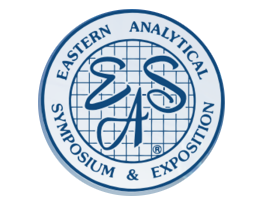Sunday, November 12; 8:30am – 5:00pm
Dr. Satinder (Sut) Ahuja, Ahuja Consulting, Calabash, NC
COURSE DESCRIPTION
Modern pharmaceutical analysis encompasses much more than analysis of active pharmaceutical ingredients, inert ingredients (excipients), or formulated drug products. To assure the quality of generic or over-the-counter (OTC) products and meet rigorous demands of regulatory agencies, it is necessary to have a thorough understanding of interactions of drug substances with excipients, especially when residual solvents are present. It is also essential to understand potential degradation reactions that can occur in the formulated product under various stress conditions that may be encountered during storage and shipment in the final package. The aim of pharmaceutical analysis is to help build and assure the quality of drug products. The initiatives such as quality-by-design (QBD) and in-process testing are utilized to meet this objective.
The analytical methods frequently used for these products are separation methods such as gas chromatography (GC), high pressure or high-performance liquid chromatography (HPLC), and capillary electrophoresis (CE). These are methods of choice for checking purity of active ingredients, monitoring changes or scale-up of synthetic procedures, evaluating new formulations, and implementing quality control/assurance of final drug products. Hyphenated methods such as GC-MS, LC-MS, and CE-MS have been found useful for characterizing impurities. The key features of the course are listed below.
- Latest analytical technology that allows greater sensitivity and selectivity.
- Methods for monitoring of genotoxic impurities because the improved sensitivity of the methods has caused the regulatory agencies to begin requesting them.
- Implications for pharmaceutical analysis from the new paradigm, “Quality by Design.” This has also increased emphasis on process analytical technology (PAT).
- Eliminating paper-based documentation such as laboratory notebooks, batch records, and log sheets.
- Analysis of biomolecules, as these molecules are gaining significance.
WHO SHOULD ATTEND
This one-day course will benefit researchers in Analytical R&D and QA and QC chemists, who perform analytical analyses, develop methods, set up stability programs, and evaluate stability data of generic or OTC products. The managers and regulatory personnel will benefit from this course, as they will learn about the optimum means to achieve their goals.
TOPICS
1. Quality-by-Design (QBD)
* Introduction
* Role of process analytical technology (PAT) in QBD
* Return on investment
2. Preformulation and Early Phase Method Development
* Introduction
* Physicochemical properties of active ingredient (AI)
* Preformulation studies
3. In-Process Control Testing
* Introduction
* Analytical considerations
* In-process control tests
4. Development and Validation of Analytical Methods
* Introduction
* Validation requirements
* Method transfer
5. Stability Studies
* Introduction
* Operational aspects
* Considerations for AI, excipients, and drug products
6. Interactive Exercises and Discussion
* Participants will discuss several case studies to get better idea of analytical
developments for the genric and OTC products
ABOUT THE INSTRUCTOR
Dr. Satinder (Sut) Ahuja was involved in analytical research and development of drugs for over 30 years. In a number of successive leadership positions, he effectively managed analytical R&D of a number of new drugs at Novartis Corporation for more than 25 years. Since 1994, as President of Ahuja Consulting, he has advised major ethical and generic pharmaceutical companies in the United States and abroad on new drug development, analytical R&D, QC/QA, and regulatory issues. His expertise in analytical chemistry includes separation and characterization of a variety of compounds at trace/ultratrace levels by chromatographic and spectroscopic techniques. He assists with the discovery of new synthetic, natural, or recombinant products, GMP/GLP issues to assure FDA compliance, and various aspects of new drug development (oral, parenteral, inhalation, and transdermal products).
He has published numerous papers and more than 20 books. His recent books include Handbook of Isolation and Characterization of Impurities in Pharmaceuticals, Chromatography and Separation Science, Handbook of Pharmaceutical Analysis, Chiral Separations by Chromatography, HPLC Method Development for Pharmaceuticals, Handbook of Bioseparations, and Trace and Ultratrace Analysis by HPLC.

